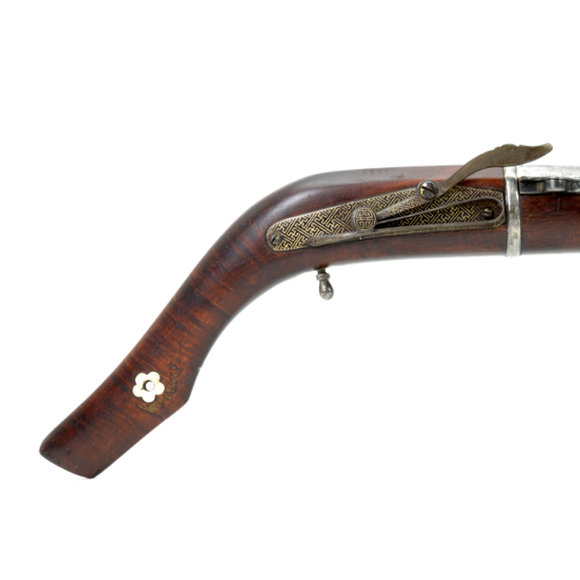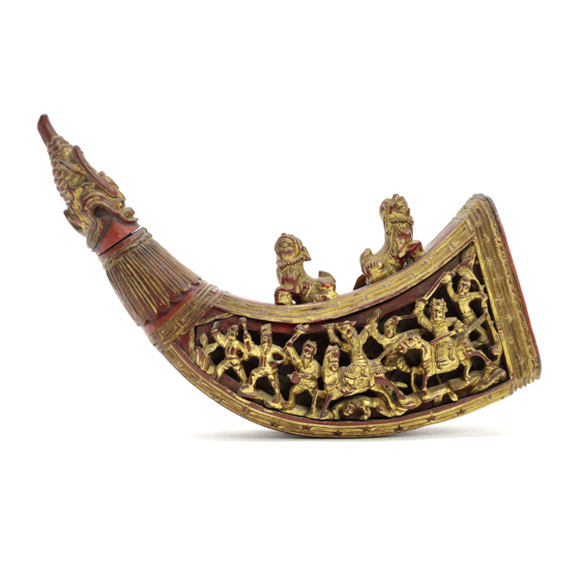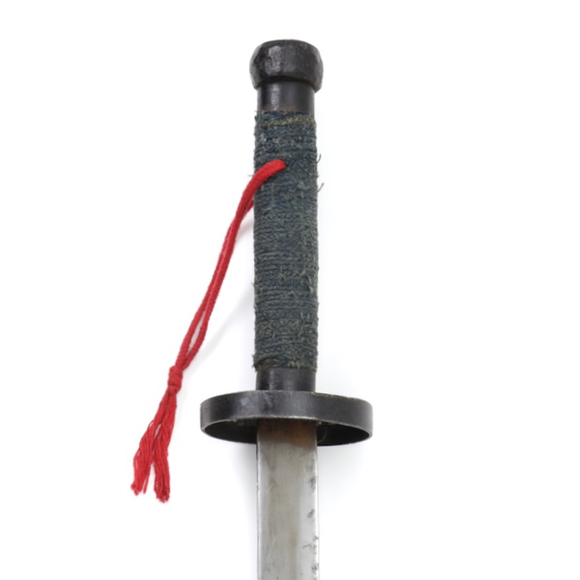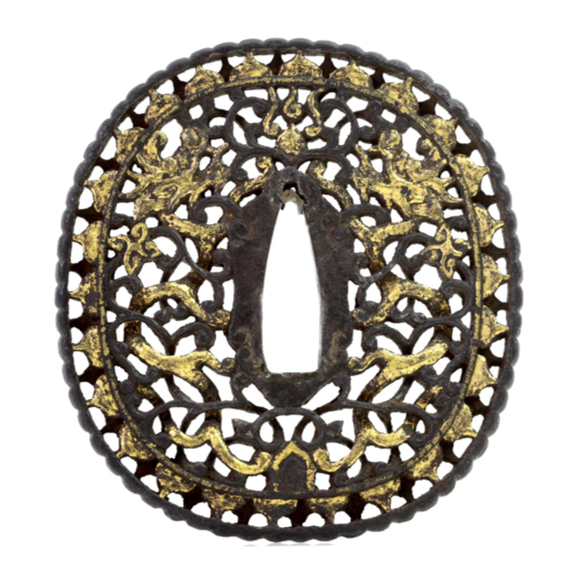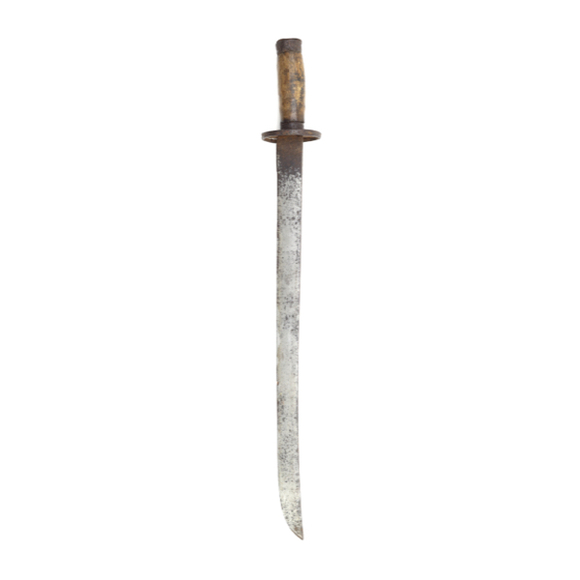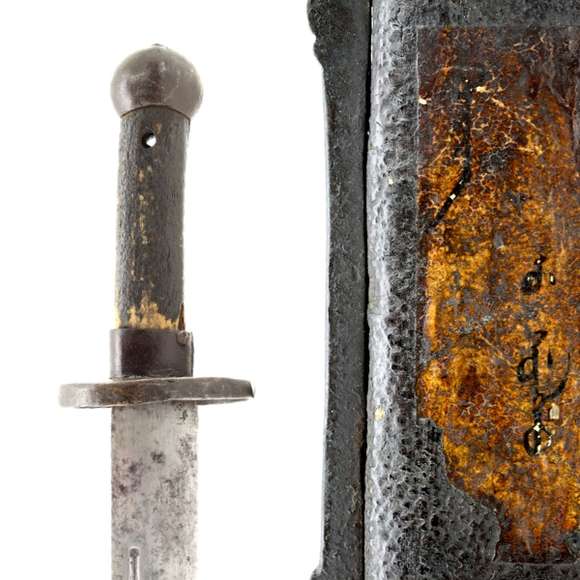With a golden damascened lock of the Indo-Portuguese type.

28.2 cm / 14 inch
12 cm / 8.7 inch
Base 8 mm
37 mm
Inside 20 mm
Outside 25 mm
287 grams
Description
At first sight, this may look like a miniature version of a standard Qing spearhead. But wait a minute, Chinese spears were never barbed. This because it was important the head could be retrieved from the victim in order to be able to face the next adversary. The only head you want to be barbed is one that is meant to remain in the person or animal it hits: you see this on arrows, fishing spears, and javelins.
It left me puzzled for a while until I realized there is in fact a javelin in the Chinese arsenal. Chinese javelin throwing must have been a martial art until not too long ago, but the art did not survive the turmoils of the Qing / Republican era transition and is not currently part of any Chinese martial arts tradition I am aware of.
Chinese javelins in reference
The Huangchao Liqi Tushi (皇朝禮器圖式) or "Illustrated Regulations on the Ceremonial Paraphernalia of the Dynasty" lists all kinds of ceremonial regalia including musical instruments, flags, uniforms, as well as a whole range of weapons in use by soldiers, officers, noblemen, up to the emperor. It was published in 1766, based on a 1759 manuscript. Among its arms section is a peculiar weapon called a lüying tietou biāo or "Green Standard Army Iron Headed Javelin". Here is the entry:
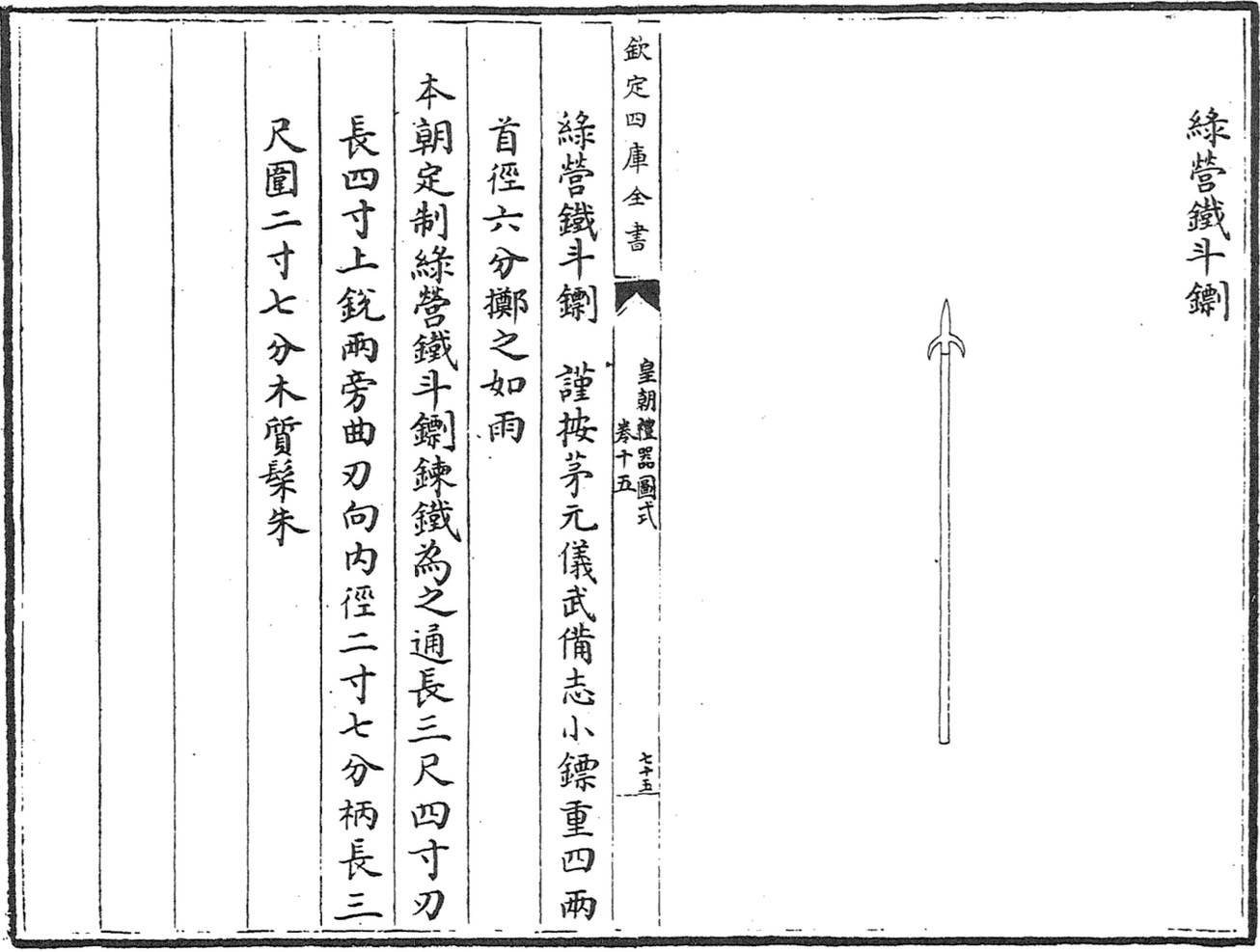
My translation:
"Green Standard Army Iron Head Javelin
According to: Mao Yuanyi's TREATISE ON MILITARY PREPAREDNESS:1
“The small javelin weighs 4 liang. The head has a circumference of 6 fen. When tossed [up in the air] they come down like rain.
The regulations of our dynasty:
Made of forged iron [as to produce steel].
Overall 3 chi 4 cun long. (Approx. 119 cm / 46.8 inch)
The blade is 4 cun long. (Approx. 14 cm / 5.5 inch)
It has a sharp point and two edges leading to barbs.
The shaft is 3 chi long. (Approx 105 cm / 41.3 inch)
Its circumference is 2 cun 7 fen. (Approx 9.4 cm or a diameter of 3.1 cm.)
It is made of wood and lacquered vermillion."
The Mesny reference
Another reference to the use of throwing spears in China is by Mesny, a British adventurer who fought for the Qing imperial army in the late 19th century. He described a certain suōbiāo or "shuttle dart" that, despite its name, is still little over 6 feet long. About its use, he says:
...A Yunnan warrior, dressed with his copper sheathed hat and paper armour, will attack half a dozen men armed with any other kind of weapon. The weapon appears to slip into a man's body with the greatest ease; sometimes through two men, one behind the other. The suōbiāo may also be thrown like a harpoon by Yunnan warriors through a man fifty feet off. It was with a suōbiāo that I defended myself at Chien Hsi Chou when attacked by scores of local soldiery armed with all sorts of weapons.2
Notes:
1. The 武備志 (wubeizhi) was compiled in 1628 by Ming naval commander Mao Yuanyi. With over 10.000 pages, it is the most comprehensive Chinese treaty on military affairs ever written.
2. From "Mesny's Chinese Miscellany", January 16th 1896. Page 233. Brought to my attention by David Leffman, author of the book about Mesny's exploits: The Mercenary Mandarin: How a British adventurer became a general in Qing-dynasty China.
Quality & condition
The piece is purely practical, with no attempts to decorate or otherwise enhance its visual appearance. Socket and neck have a nice dark patina, the blade showing the actual color of the metal. It has signs of various field sharpening sessions, suggesting it was put to actual use.
Conclusion
A very rare example of a small, barbed Chinese spearhead that was most likely the head of a type of javelin. It's an art not generally associated with Chinese martial arts, but various references indicate it has in fact been practiced.
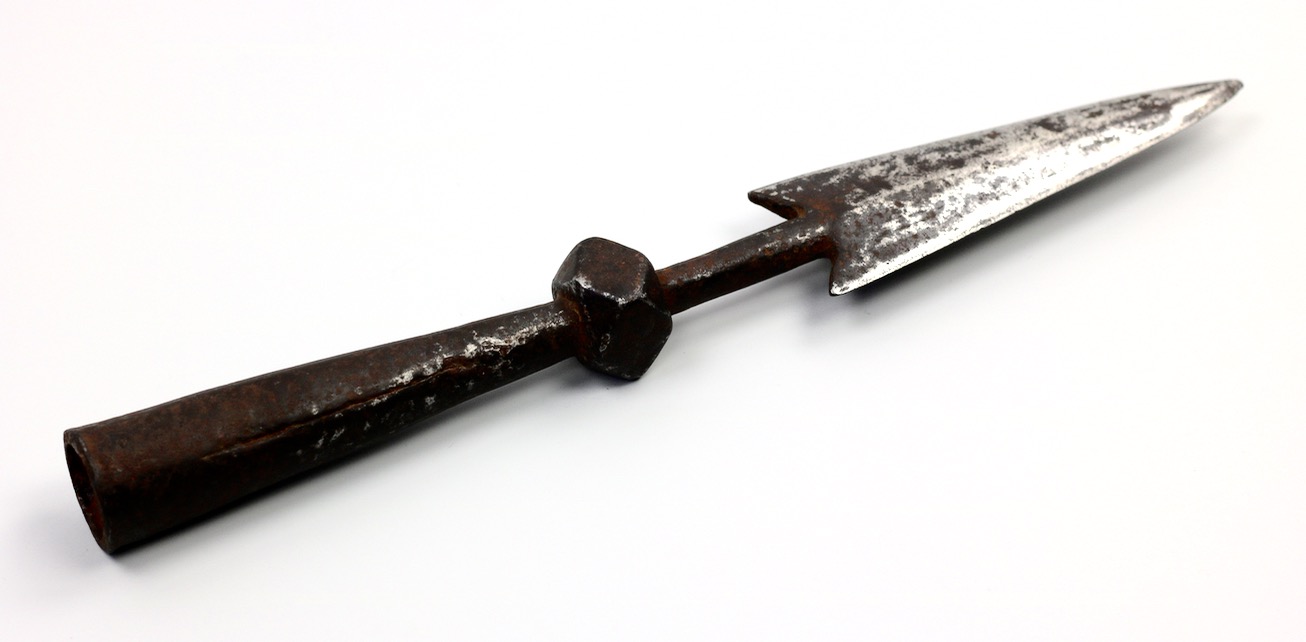
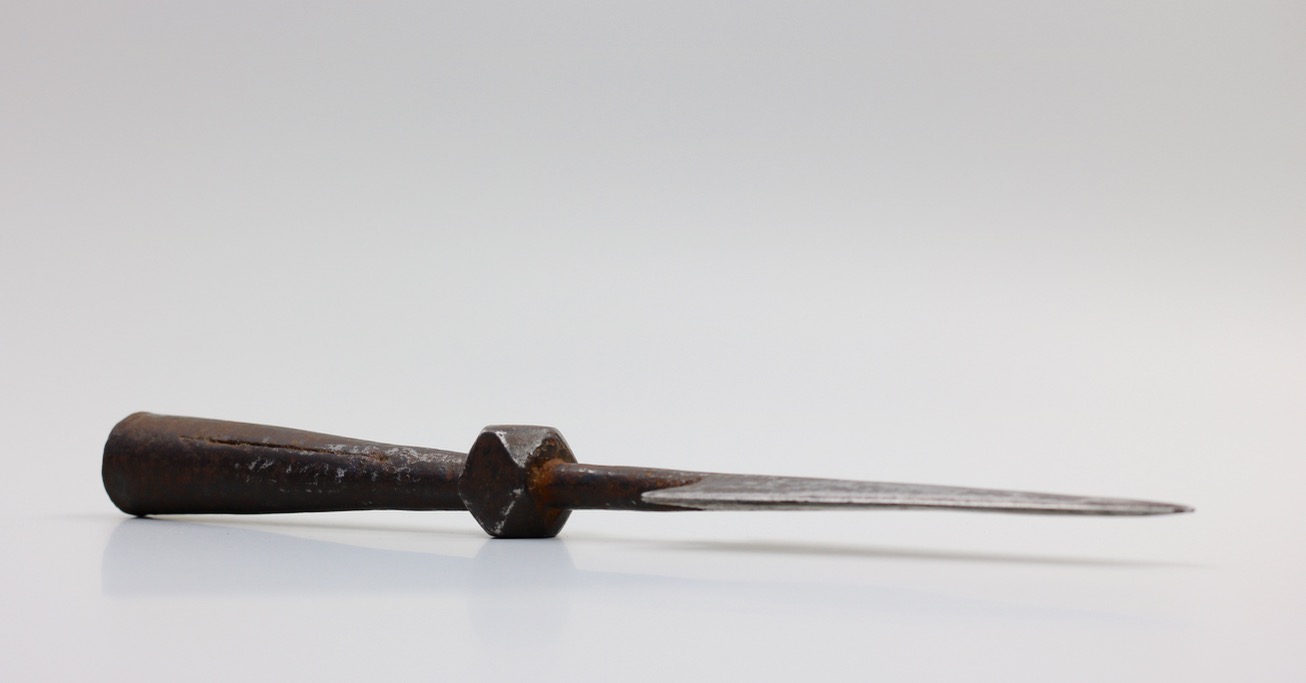

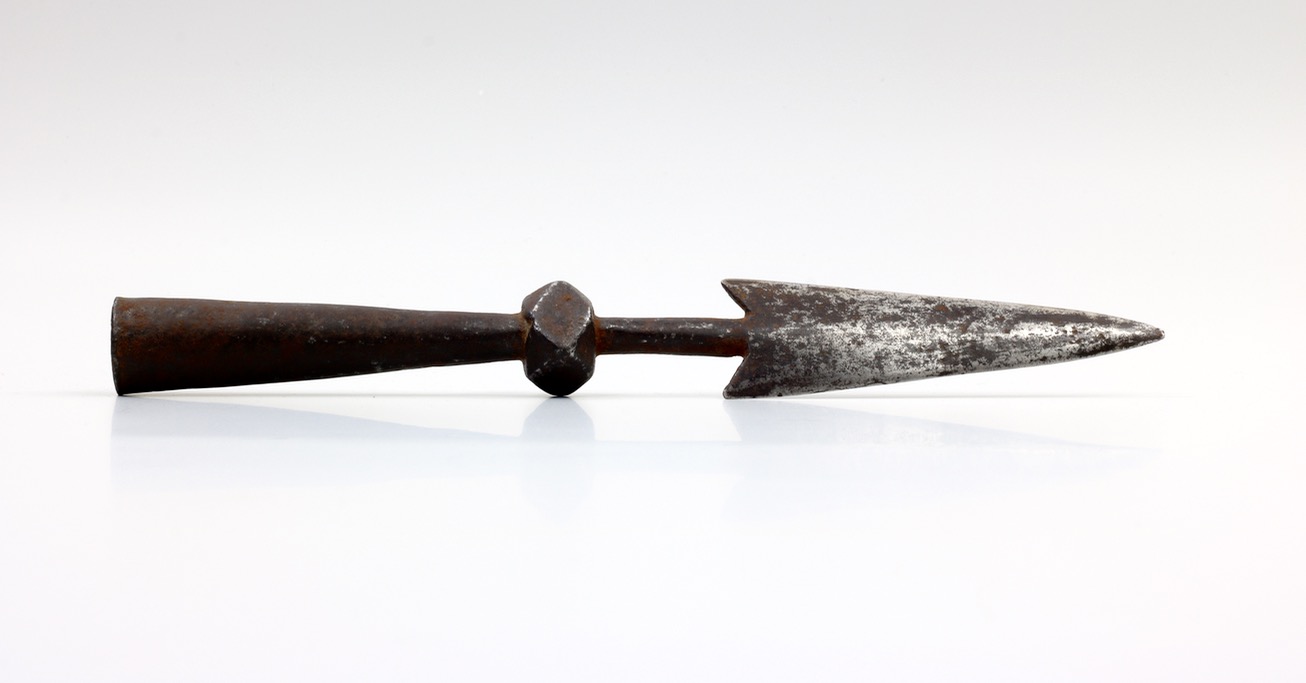
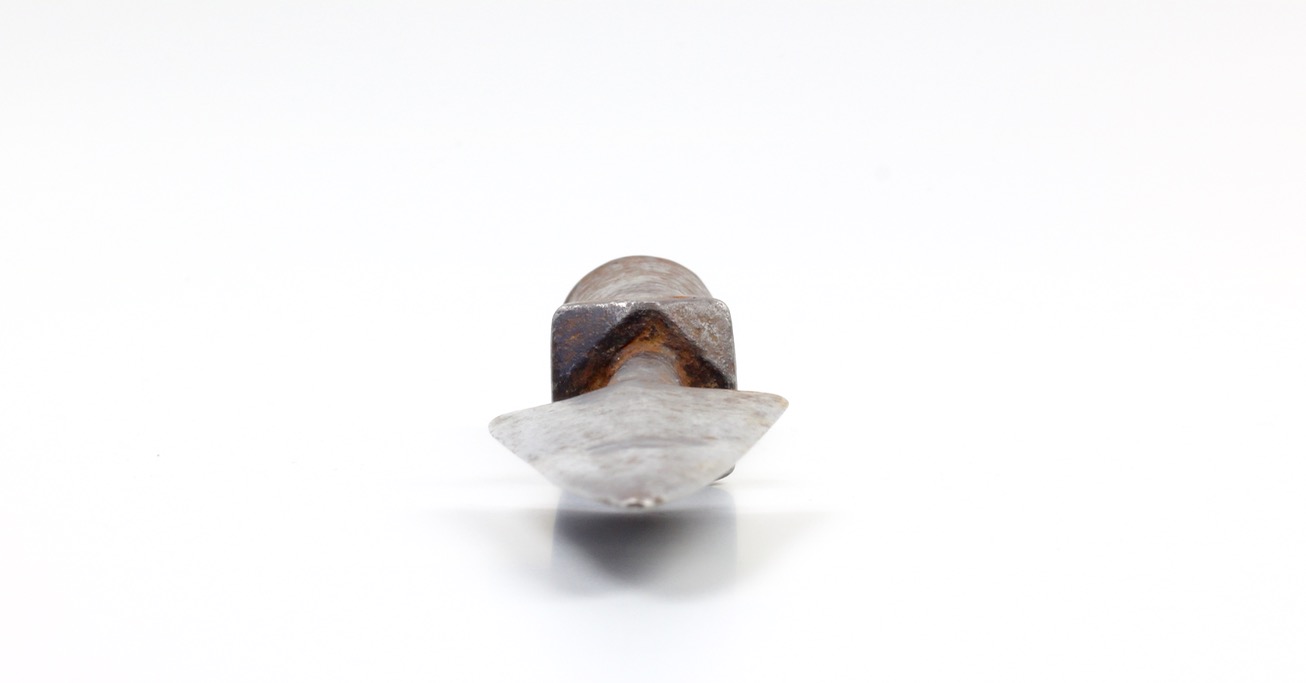
Probably of Southern origin, with a straight blade and flaring tip.
In the style of northern work of the 16th and 17th centuries
A simple utilitarian weapon, probably made for rural martial artists or militia.
A standard pattern Qing military saber, but with the rare addition of a label in Manchu.

